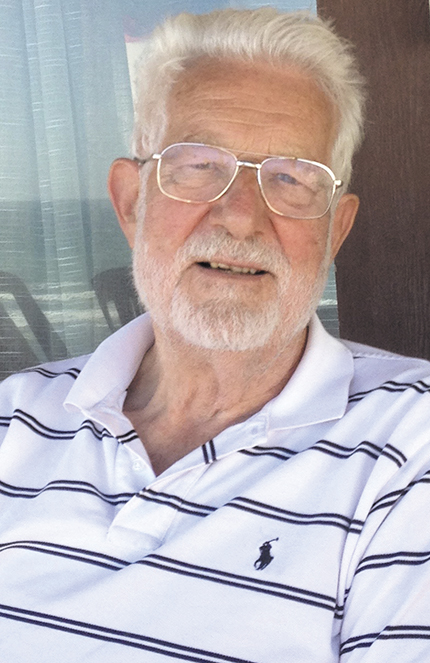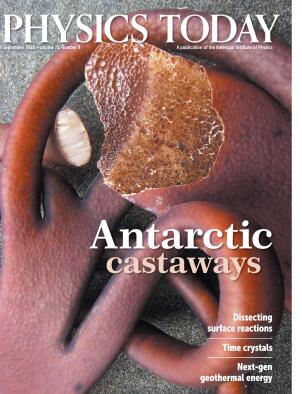Hellmut Fritzsche
DOI: 10.1063/PT.3.4028
In a letter he wrote in June 2018, the month of his passing, Hellmut Fritzsche, professor emeritus at the University of Chicago, reflected on his life and marriage: “[My wife] Sybille and I were so very fortunate to have been selected in 1950 to the group of European students who were invited by the US government to come to the United States for one year. This is how we met. How immensely admirable was the generosity of the United States! We both had a rich and rewarding life. We are grateful for the opportunities given to us and for the wonderful life and inspiring circle of friends who questioned and supported us intellectually.” Those of us in that circle were richly rewarded for having experienced Hellmut’s inquisitive mind and vibrant nature.

Hellmut Fritzsche

Born on 20 February 1927 in Berlin, Hellmut received his diplom in physics from the University of Göttingen in 1952. He went to the US and earned his PhD at Purdue University in 1954; working with Karl Lark-Horovitz, he studied the electrical properties of semiconductors. In 1957 he moved to the University of Chicago, where he remained until his retirement in the late 1990s.
Hellmut’s impressive early experiments at Chicago involved creating samples of germanium doped by transmutation of one isotope into gallium and another into arsenic. He used the samples to study the motion of electrons in impurity bands; the isotope ratio determines the precise “compensation” ratio of acceptors to donors. That research laid the groundwork for much of our understanding of electron motion in disordered systems: The known compensation allowed him to isolate the effects of disorder from those of electron–electron interaction when electrons tunnel between localized states. The same issues were central to understanding the behavior of electrons in amorphous semiconductors, a subject in which Hellmut became the foremost experimenter.
In the mid 1960s, Hellmut was introduced by John Bardeen to Stanford Ovshinsky, a self-educated industrial scientist and founder of Energy Conversion Devices (ECD). While maintaining his faculty position at Chicago, Hellmut guided much of ECD’s innovative research, which led to important products—including electronic and optical memory devices, solar cells, and batteries—that use amorphous materials. His enthusiasm for seeing scientific discovery translated into technology was an inspiration to his students at a time when many universities avoided that connection.
Hellmut took particular pride in his ability to derive innovative experimental solutions for problems he confronted. For example, he conceived a means of using a simple ball valve to control alternating gases in a multicomponent deposition system. While in India visiting colleagues with meager resources, he designed and built a vacuum system from available kitchenware. And to gently remove self-supporting thin-film samples from substrates, he devised an instrument to float the film onto the surface of a solvent.
Starting in 1977 Hellmut chaired Chicago’s physics department for almost a decade. His commitment to research excellence was complemented by his single-minded devotion to overseeing the building of the Kersten Physics Teaching Center, down to the design of the classrooms and the choice of furniture in the interactive spaces. As chair, Hellmut emphasized the recruitment of junior faculty. He created a vibrant intellectual atmosphere and made sure that new recruits were introduced to the cultural riches of Chicago. It was a family effort, with Hellmut and Sybille making their home the academic and social nexus of Chicago’s Hyde Park neighborhood.
Hellmut and Sybille were an amazing team. While he was leading the field of amorphous semiconductors, she earned a law degree at the University of Chicago and became an influential civil rights lawyer before earning a PhD in Chinese history. The two were voracious readers, and sharing a meal with them was an intellectual feast as well.
Hellmut and Sybille remained physically active into their nineties. They kayaked and swam at their beloved summer home on New Hampshire’s Lake Winnipesaukee as late as the summer of 2017. The letter quoted above provided a coda to their lives prior to their deaths on 17 June 2018. It concluded, “Now we have come to the end of our lives. We wish to avoid the painful and frustrating period of agonizing death with the often occurring changes in personality, supported by the latest advances of medicine. We both decided to end our lives with dignity. That is what we have done and this letter is our farewell.”
All who knew Hellmut can understand how the grace and dignity of the end of his life only underscores the many ways he taught us about how to live productively and joyously until we, too, bid farewell.
More about the Authors
Michael Paesler. North Carolina State University, Raleigh.
Marc Kastner. Science Philanthropy Alliance, Palo Alto, California, Massachusetts Institute of Technology, Cambridge.
Thomas F. Rosenbaum. California Institute of Technology, Pasadena.
